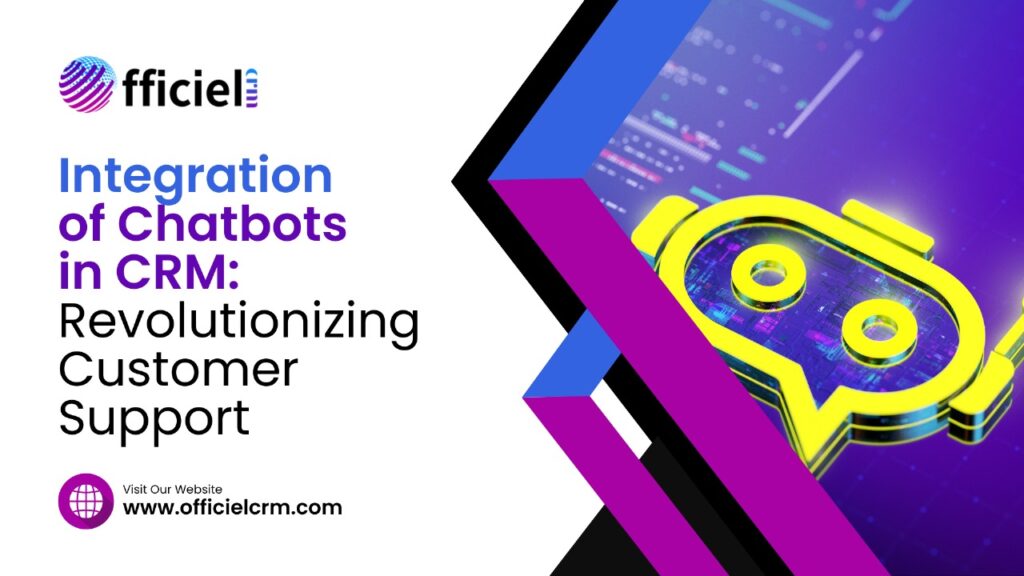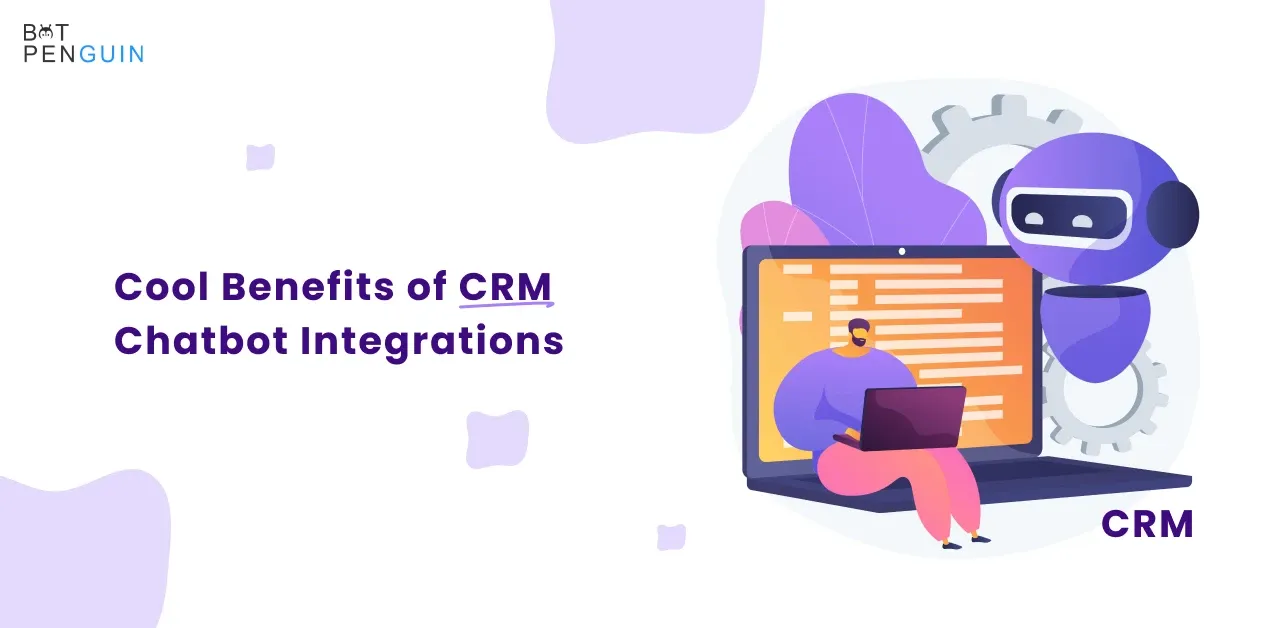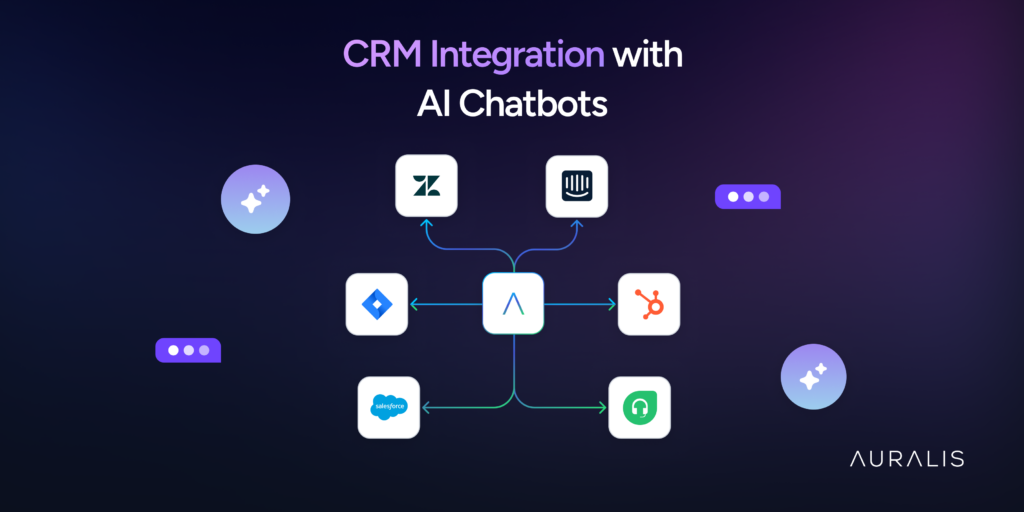
In today’s fast-paced digital landscape, businesses are constantly seeking innovative ways to connect with their customers, streamline operations, and boost their bottom line. One of the most promising strategies to emerge in recent years is the integration of CRM (Customer Relationship Management) systems with marketing chatbots. This powerful combination offers a synergistic approach, allowing businesses to leverage the strengths of both technologies to create personalized customer experiences, automate marketing tasks, and drive significant growth.
This comprehensive guide will delve deep into the world of CRM marketing chatbot integration, exploring its benefits, implementation strategies, and best practices. We’ll uncover how this integration can transform your marketing efforts, leading to increased customer engagement, higher conversion rates, and improved overall business performance. Get ready to unlock the full potential of your marketing strategy!
Understanding the Fundamentals: CRM and Chatbots
Before we dive into the integration, let’s establish a solid understanding of the core components: CRM and chatbots.
What is a CRM System?
A CRM system is a software solution designed to manage and analyze customer interactions and data throughout the customer lifecycle. It acts as a centralized hub for all customer-related information, including contact details, purchase history, communication logs, and more. Think of it as the brain of your customer relationships.
Key features of a CRM system include:
- Contact Management: Storing and organizing customer contact information.
- Lead Management: Tracking and nurturing potential customers.
- Sales Automation: Automating sales processes, such as lead qualification and follow-ups.
- Marketing Automation: Automating marketing campaigns and workflows.
- Customer Service: Managing customer support requests and issues.
- Reporting and Analytics: Providing insights into customer behavior and business performance.
Popular CRM platforms include Salesforce, HubSpot, Zoho CRM, and Microsoft Dynamics 365. Each platform offers a range of features and functionalities, catering to businesses of different sizes and industries.
What is a Marketing Chatbot?
A marketing chatbot is an AI-powered conversational interface designed to interact with website visitors or customers through text or voice. It can be deployed on various platforms, such as websites, social media channels, and messaging apps. Chatbots are programmed to answer questions, provide information, guide users through processes, and even make recommendations.
Key capabilities of marketing chatbots include:
- 24/7 Availability: Providing instant support and assistance around the clock.
- Lead Generation: Capturing leads by asking qualifying questions and collecting contact information.
- Customer Service: Answering frequently asked questions and resolving basic issues.
- Product Recommendations: Suggesting products or services based on customer preferences and behavior.
- Appointment Scheduling: Allowing customers to book appointments directly through the chatbot.
- Personalized Experiences: Tailoring conversations and content to individual customer needs.
Examples of chatbot platforms include ManyChat, Chatfuel, Dialogflow, and Intercom. These platforms offer various features and customization options to create engaging and effective chatbot experiences.
The Power of Integration: Why CRM and Chatbots are a Perfect Match
The true magic happens when you combine the power of CRM and chatbots. Integrating these two technologies creates a seamless and efficient marketing ecosystem, offering numerous benefits for businesses.
Enhanced Customer Experience
By integrating a chatbot with your CRM, you can provide customers with a highly personalized and responsive experience. The chatbot can access customer data stored in the CRM, allowing it to tailor conversations, offer relevant recommendations, and provide proactive support. Imagine a customer visiting your website and the chatbot instantly recognizing them, greeting them by name, and offering assistance based on their past interactions and purchase history. This level of personalization fosters a strong sense of connection and loyalty.
Improved Lead Generation and Qualification
Chatbots are excellent lead generation tools. They can engage website visitors, capture their contact information, and qualify leads based on their responses to specific questions. When integrated with a CRM, this lead data is automatically added to the CRM, allowing your sales team to quickly follow up with qualified leads. This automated process saves time, reduces manual data entry, and ensures that no leads fall through the cracks.
Streamlined Sales and Marketing Processes
CRM-chatbot integration can automate many sales and marketing tasks, freeing up your team to focus on more strategic initiatives. For example, the chatbot can automatically send marketing materials, schedule demos, and answer frequently asked questions, reducing the workload on your sales and marketing teams. This automation leads to increased efficiency and allows your team to close deals faster.
Increased Conversion Rates
By providing instant support, personalized recommendations, and streamlined processes, CRM-chatbot integration can significantly increase conversion rates. Chatbots can guide customers through the sales funnel, answer their questions, and address their concerns, making it easier for them to make a purchase. The ability to provide immediate assistance and personalized recommendations can be a major differentiator in today’s competitive market.
Better Data Insights and Analytics
Integrating your chatbot with your CRM allows you to gather valuable data insights into customer behavior and preferences. You can track chatbot interactions, analyze customer conversations, and identify trends. This data can be used to optimize your marketing campaigns, improve your chatbot’s performance, and personalize customer experiences even further. The combination of CRM’s analytical capabilities and the chatbot’s conversational data creates a powerful feedback loop for continuous improvement.
Implementing CRM Marketing Chatbot Integration: A Step-by-Step Guide
Implementing CRM marketing chatbot integration may seem daunting, but with a well-defined plan and the right tools, you can achieve a successful integration. Here’s a step-by-step guide to get you started:
1. Define Your Goals and Objectives
Before you begin, clearly define your goals and objectives for the integration. What do you hope to achieve? Are you looking to improve lead generation, enhance customer service, or increase sales? Having clear goals will help you choose the right tools and measure your success.
2. Choose the Right CRM and Chatbot Platforms
Select CRM and chatbot platforms that meet your specific needs and budget. Consider factors such as features, scalability, ease of use, and integration capabilities. Research platforms that offer native integrations or API connections to simplify the integration process. Ensure that the platforms you choose are compatible with each other and with your existing systems.
3. Plan Your Integration Strategy
Develop a detailed integration strategy outlining how you will connect your CRM and chatbot platforms. Determine which data you want to share between the two systems and how the data will be exchanged. Consider the user experience and how the integration will impact your customers. Map out the workflows and processes that will be automated.
4. Establish Data Mapping and Synchronization
Carefully map the data fields between your CRM and chatbot platforms. Ensure that data is synchronized accurately and consistently. This may involve configuring data mapping rules and setting up automated data synchronization processes. Pay attention to data privacy and security regulations.
5. Design and Build Your Chatbot
Design and build your chatbot based on your integration strategy. Define the chatbot’s personality, tone, and conversational flow. Program the chatbot to answer questions, provide information, capture leads, and guide users through processes. Test your chatbot thoroughly to ensure it functions as intended.
6. Integrate Your Chatbot with Your CRM
Connect your chatbot to your CRM using the integration methods provided by the platforms. This may involve using pre-built integrations, APIs, or third-party integration tools. Configure the integration to share data between the two systems automatically. Test the integration thoroughly to ensure that data is flowing correctly.
7. Test and Refine Your Integration
Once the integration is complete, test it thoroughly to ensure it functions as expected. Monitor the data flow and identify any issues. Refine your integration based on your testing results and user feedback. Continuously monitor the performance of your chatbot and CRM integration and make adjustments as needed.
8. Train Your Team
Provide training to your team on how to use the integrated CRM and chatbot system. Ensure that your team understands how to access customer data, manage leads, and respond to customer inquiries. Provide ongoing training and support to ensure that your team is comfortable using the system and can maximize its benefits.
Best Practices for CRM Marketing Chatbot Integration
To maximize the benefits of your CRM marketing chatbot integration, consider these best practices:
- Personalize the Customer Experience: Use customer data from your CRM to personalize chatbot conversations and recommendations.
- Provide Proactive Support: Use the chatbot to proactively offer assistance and address customer issues.
- Keep it Simple: Design your chatbot to be user-friendly and easy to navigate.
- Monitor and Analyze Performance: Track key metrics, such as lead generation, conversion rates, and customer satisfaction.
- Continuously Optimize: Regularly review your chatbot and CRM integration and make improvements based on data and user feedback.
- Ensure Data Privacy and Security: Protect customer data by implementing security measures and complying with data privacy regulations.
- Choose the Right Chatbot Platform: Select a chatbot platform that integrates seamlessly with your CRM and offers the features you need.
- Train Your Team: Provide comprehensive training to your team to ensure they can effectively use the integrated system.
- Set Clear Expectations: Communicate the chatbot’s capabilities and limitations to your customers.
- Regularly Update Your Chatbot: Keep your chatbot up-to-date with the latest information and features.
Real-World Examples: CRM Chatbot Integration in Action
Let’s explore some real-world examples of how businesses are leveraging CRM-chatbot integration to achieve impressive results:
E-commerce Retailer
An e-commerce retailer integrates a chatbot with its CRM to provide personalized product recommendations and customer support. The chatbot accesses customer purchase history and browsing behavior from the CRM to suggest relevant products. It also answers frequently asked questions about shipping, returns, and order status. This integration has resulted in a significant increase in sales and customer satisfaction.
Financial Services Company
A financial services company uses a chatbot integrated with its CRM to automate lead generation and qualification. The chatbot asks website visitors qualifying questions and captures their contact information. The chatbot then automatically adds the lead data to the CRM, where it is assigned to a sales representative. This integration has streamlined the lead generation process and improved the efficiency of the sales team.
Healthcare Provider
A healthcare provider uses a chatbot integrated with its CRM to schedule appointments and answer patient inquiries. The chatbot accesses patient data from the CRM to personalize the appointment scheduling process. It also answers frequently asked questions about insurance coverage, billing, and medical services. This integration has improved patient satisfaction and reduced the workload on the administrative staff.
The Future of CRM and Chatbots: Emerging Trends
The integration of CRM and chatbots is an evolving field, with new trends and technologies emerging constantly. Here are some trends to watch:
- AI-Powered Chatbots: Chatbots are becoming more sophisticated, leveraging artificial intelligence to understand natural language, provide more personalized responses, and automate more complex tasks.
- Omnichannel Integration: Businesses are integrating chatbots across multiple channels, such as websites, social media, and messaging apps, to provide a consistent customer experience.
- Integration with Emerging Technologies: CRM and chatbots are integrating with emerging technologies, such as voice assistants and augmented reality, to create even more immersive and interactive customer experiences.
- Increased Focus on Personalization: Businesses are using CRM data to personalize chatbot interactions and provide highly targeted recommendations and offers.
- Enhanced Analytics and Reporting: Businesses are using advanced analytics tools to track chatbot performance and gain deeper insights into customer behavior.
Troubleshooting Common Issues
As with any technology integration, you may encounter some common issues when implementing CRM-chatbot integration. Here are some troubleshooting tips:
- Data Synchronization Issues: If data is not synchronizing correctly between your CRM and chatbot, double-check your data mapping rules and synchronization settings.
- Chatbot Performance Issues: If your chatbot is not performing as expected, review its conversation flow, training data, and integration settings.
- Integration Errors: If you encounter integration errors, review the platform documentation and troubleshoot the integration settings.
- User Experience Issues: If users are experiencing issues with the chatbot, review the chatbot’s design, user interface, and conversational flow.
- Security and Privacy Issues: Ensure that you are following data privacy and security best practices to protect customer data.
Conclusion: Embracing the Power of CRM Marketing Chatbot Integration
CRM marketing chatbot integration is a game-changer for businesses looking to transform their marketing efforts, enhance customer experiences, and drive growth. By combining the strengths of CRM systems and chatbots, businesses can create personalized customer interactions, automate marketing tasks, and gain valuable data insights. The integration process requires careful planning, the right tools, and a commitment to continuous improvement. By following the best practices and staying ahead of the latest trends, you can unlock the full potential of CRM-chatbot integration and achieve remarkable results.
Embrace the power of CRM marketing chatbot integration and revolutionize the way you connect with your customers. The future of marketing is here, and it’s conversational, personalized, and data-driven. Are you ready to take the leap?

